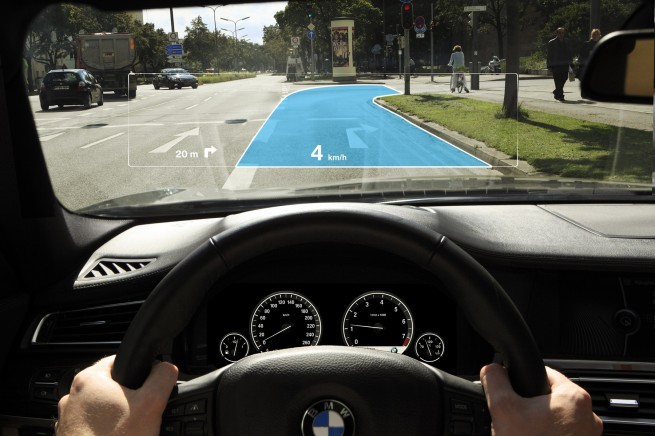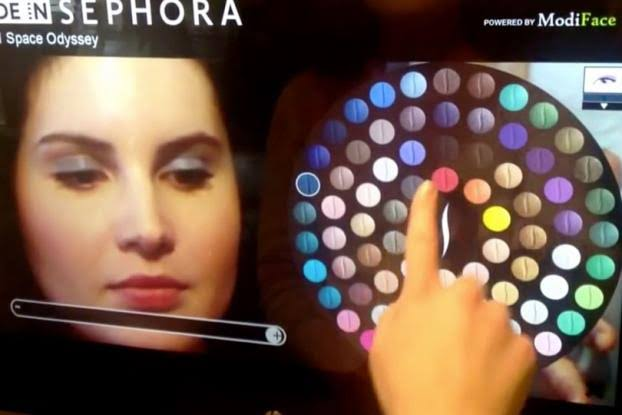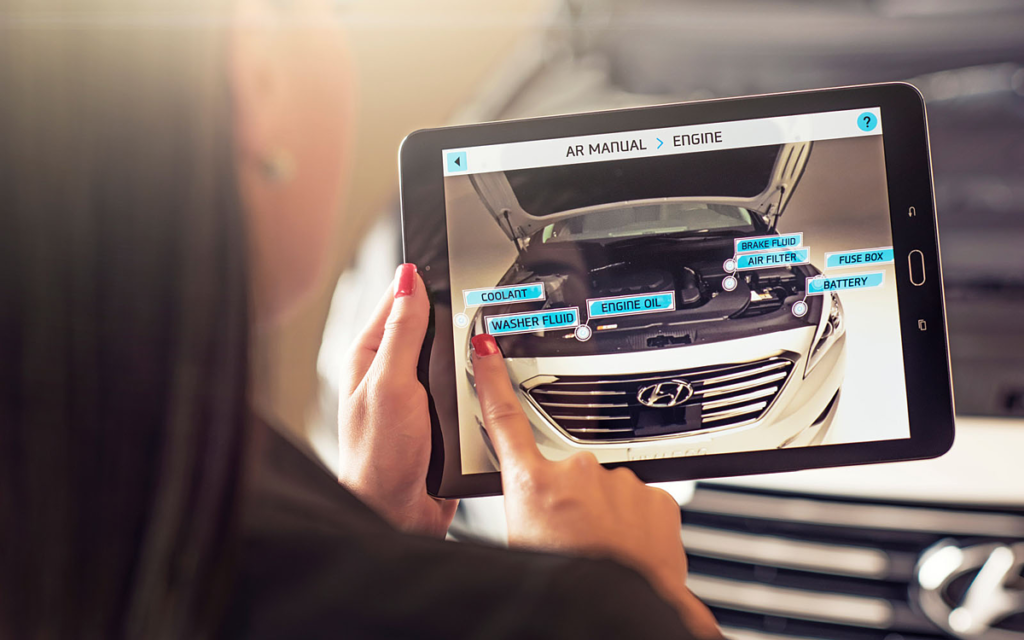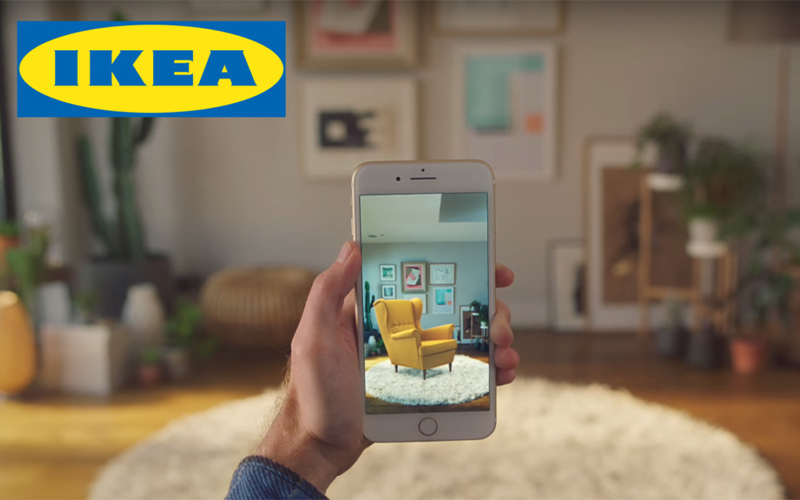Warum Nachhaltigkeit wichtig ist
Warum es wichtig ist, Werte für eine positivere Entwicklung in die persönliche Arbeit mit einzubeziehen wird vor allem dann klar, wenn das Ausmaß und die Geschwindigkeit betrachtet werden, mit welcher der Klimawandel voranschreitet. „Der Mensch“ ist nicht nur verantwortlich für das Aussterben zahlreicher Arten und einen massiven Rückgang der Biodiversität, auch wird dieser Trend auf Kosten einiger Miliarden Menschen ausgetragen, die dafür in Armut leben müssen und Schwierigkeiten haben ihre Lebensqualität aufrecht zu erhalten. Ungefähr 20 Prozent der weltweiten Bevölkerung sind sogenannte „over consumers“, sie verbrauchten 83 Prozent der Ressourcen. Bis zur Mitte des 21. Jahrhundert wird es die größte Herausforderung sein, unter einer stetig wachsenden Bevölkerungszahl die Folgen einer sozialen sowie Klimakrise zu bewältigen.1
Nachhaltigkeit als wicked Problem
Nachhaltigkeit zu erreichen kann auch als “wicked problem” definiert werden. Der Begriff, welcher auf Rittel und Webber (Ulm School of Design) zurückgeht, versucht komplexe Probleme der Gesellschaft zu beschreiben, die sich weder einfach charakterisieren noch endgültig lösen lassen, und nach einer komplexeren Untersuchung sowie ganzheitlichen Lösungsstrategien verlangen.2
Ein wicked problem ist also ein Problem, dass in unzählige weitere, größere Problem-Verstrickungen eingebettet ist, was nicht selten auch mit den unterschiedlichen Perspektiven zu tun hat, aus denen man es betrachten kann.3
(Bieling 2020)
Welche Arten von nachhaltiger Designarbeit gibt es?
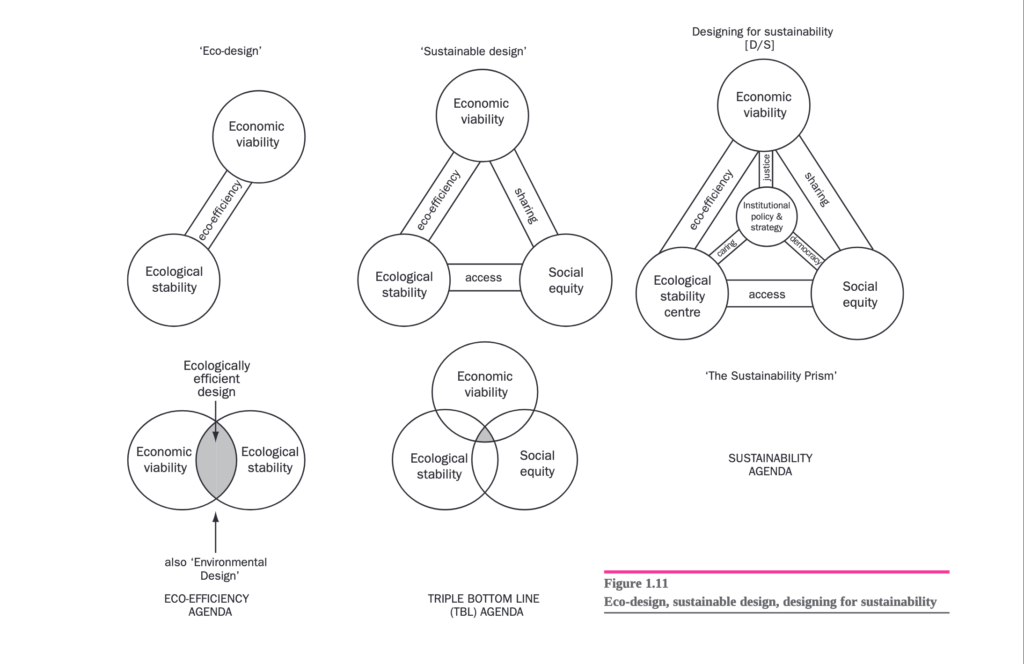
Die Grafik aus dem Buch “Design Activism. Beautiful strangeness for a sustainable world” zeigt das “Nachhaltigkeits Prisma”, welches die ökologischen, ökonomischen, sozialen und institutionellen Strukturen verbindet und deren Unterschiede darstellt.
Leitlinien um Nachhaltigkeit in Designprozesse einzugliedern
Sustainable graphic design is the application of sustainability principles to the field of graphic design. 4
(Ndem 2019)
Ndem beschreibt in seiner Arbeit über die Rolle von Designer*Innen für ökologische Nachhaltigkeit die Orientierung an den vier Säulen: Kultur, Gesellschaft, Ökonomie und Ökologie. Demnach würde nachhaltiges Grafik Design entstehen, wenn sich diese Werte im Gestaltungsprozess selbst sowie in der Wahl der Materialien/des Mediums wiederfinden. Weiters geht es darum diese Werte weiterzugeben.5 Einen weiteren Rahmen für nachhaltige Entwicklung definieren auch die 17 Ziele der Vereinten Nationen in ihrer Agenda 2030(Sustainable Development Goals).6
Weil sich im Design Haltung und Werte manifestieren, können diese dadurch auch aktiv vermittelt werden. Ebenso lassen sich die SDG durch Design in die Sprache und Codes von Produkten, Dienstleistungen, Geschäftsmodellen und Infrastrukturen übersetzen.7
Liedtke, C.; Kühlert, M.; Huber, K.; Baedeker, C. (2019)
Peter Claver Fine empfielt Design-Studierenden sechs Prinzipien, wie sie nachhaltige Werte in ihre Arbeit miteinbeziehen können.
- A reform minded approach to design
Reform sollte immer ein Bestandteil der Rolle von Design sein. - A holistic approach to design
Design sollte interdisziplinär und Medienneutral sein. - An international spirit
Auch wenn Design lokal stattfindet, sollte es in einem Konzept von Globalisation betrachtet werden. - A rejection of assumptions
Dieser Punkt bezieht sich auch auf vergangene Bewegungen in der Designgeschichte. Jede Avant Garde Bewegung hat ihren Ursprung darin, in Frage zu stellen was Design überhaupt bedeutet oder bedeuten soll. - A commitment to fundamentals
Mit der Bekenntnis der Grundlagen beschreibt Fine „truth to materials“ und „truth to process“. Mit der „truth to materials and process“ wird erläutert, dass gewählte Materialien und ihre Produktionsweisen direkte ökologische Auswirkung haben und Designer*Innen durch ihre Wahl auch erheblichen Einfluss auf Weiterentwicklung und Durchsetzungsvermögen haben.8
Designers cannot wait for the right client to come along and offer the opportunity to improve our world. It is in both cases a matter of self-preservation.
Peter Claver Fine (2016)
Quellen: 1 Fuad-Luke, Alistair (2009). design activism. beautiful strangeness for a sustainable world. Earthscan. London 2 Bieling, Tom (2020). Wicked Problems mehr denn je?! Gedanken zu Horst Rittel. In: DESIGNABILITIES Design Research Journal, (07). https://tinyurl.com/ya6h3ayh ISSN 2511-6274 (3.12.2021) 3 Bieling, Tom (2020). Wicked Problems mehr denn je?! Gedanken zu Horst Rittel. In: DESIGNABILITIES Design Research Journal, (07). https://tinyurl.com/ya6h3ayh ISSN 2511-6274, S. 2 (3.12.2021) 4 Ndem, Emmanuel Joseph (2019). The place of a graphic designer in environmental sustainability. in: International Journal of Engineering Applied Sciences and Technology. Vol. 4. 251-257 5 Ndem, Emmanuel Joseph (2019). The place of a graphic designer in environmental sustainability. in: International Journal of Engineering Applied Sciences and Technology. Vol. 4. 251-257 6 United Nations. Global Sustainability Goals. https://sdgs.un.org/goals (3.12.2021) 7 Liedtke, C.; Kühlert, M.; Huber, K.; Baedeker, C. (2019): Transition Design Guide – Design für Nachhaltigkeit. Gestalten für das Heute und Morgen. Ein Guide für Gestaltung und Entwicklung in Unternehmen, Städten und Quartieren, Forschung und Lehre. Wuppertal Spezial Nr. 55, Wuppertal Institut für Klima, Umwelt, Energie. Wuppertal. Online verfügbar: https://wupperinst.org/design-guide ISBN 978-3-946356-13-4 8 Claver Fine, Peter (2016). Sustainable Graphic Design: Principles and Practices. Bloomsbury Academic.


